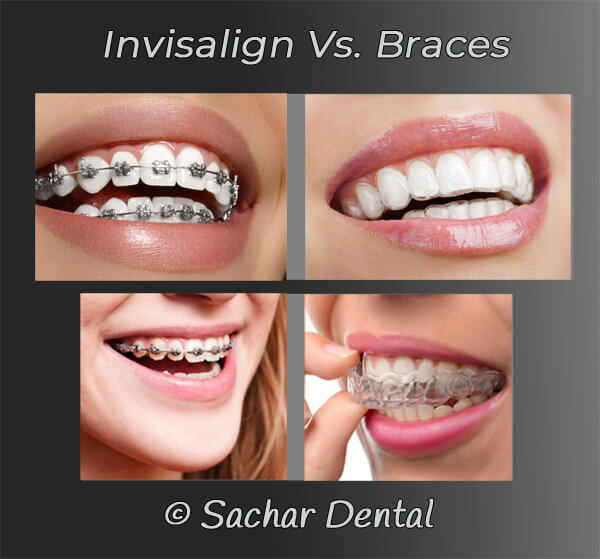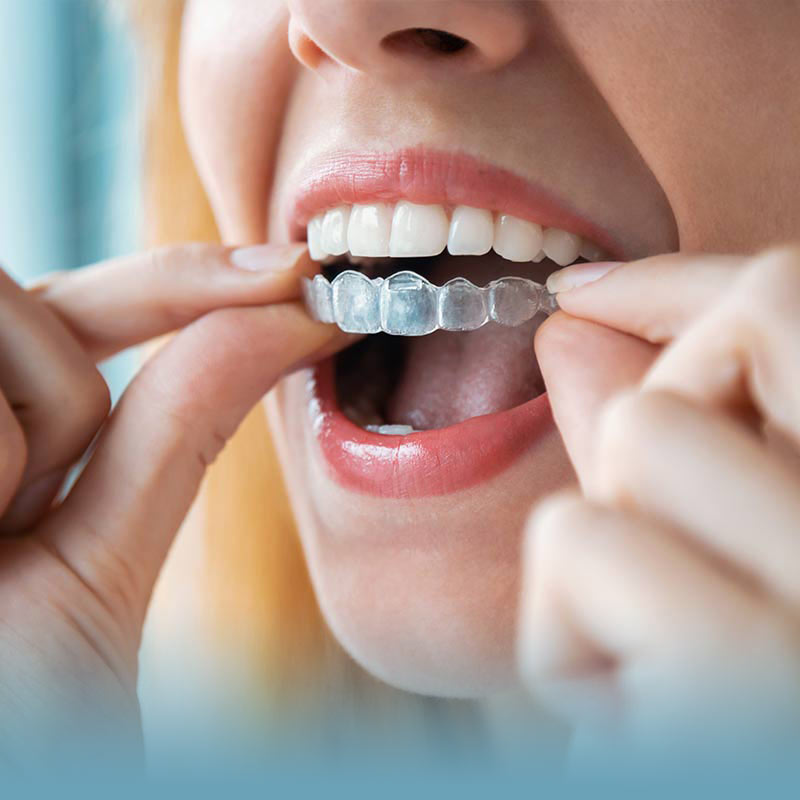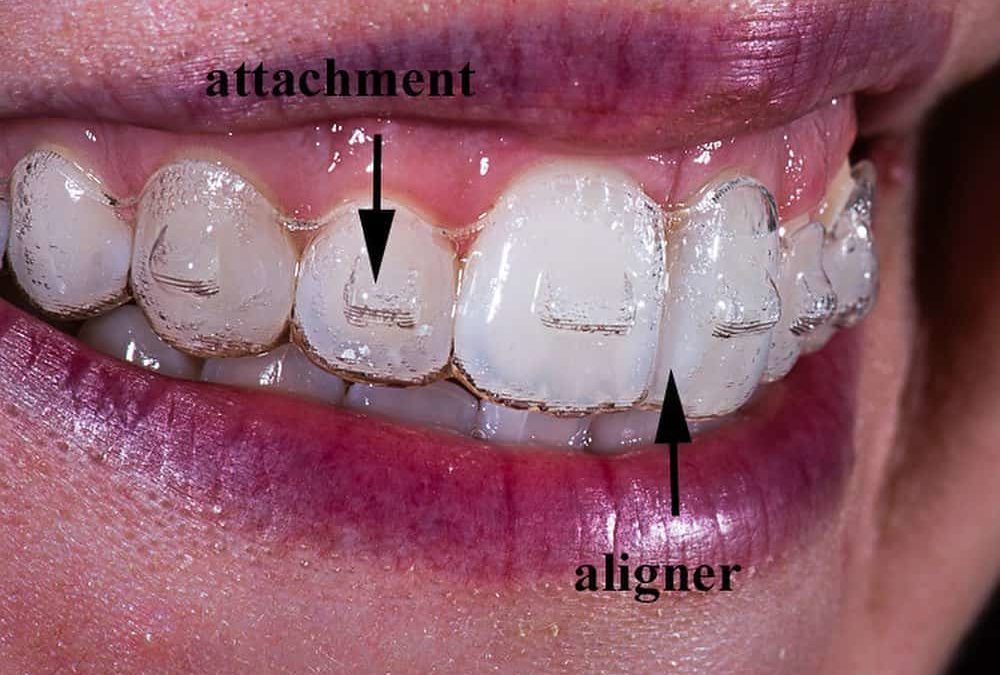What to Anticipate Throughout Your Invisalign Journey: A Comprehensive Introduction
Wiki Article
Invisalign vs. Traditional Dental braces: Which Choice Is Right for You?
When considering orthodontic treatment, the option in between Invisalign and conventional dental braces offers numerous important variables that merit mindful assessment. Invisalign offers a very discreet alternative with removable aligners, while conventional braces give a more noticeable yet reliable remedy for serious misalignment. Each choice includes distinct benefits and drawbacks connected to looks, convenience, therapy duration, and cost. Understanding these nuances is essential for making an informed decision that aligns with your personal preferences and way of life. The question remains: which alternative will ideal fulfill your orthodontic needs and expectations?Introduction of Treatment Alternatives

In contrast, standard dental braces include metal braces and cords that are bonded to the teeth. This technique uses continuous pressure gradually to attain alignment. While efficient for intricate orthodontic concerns, traditional braces need normal gos to for changes and can posture challenges in maintaining oral hygiene because of the trouble of cleansing around cables and braces.
Both options have their advantages, and the option usually depends upon details oral problems, way of living choices, and person conformity. Inevitably, getting in touch with an orthodontic professional is important for figuring out one of the most appropriate therapy strategy tailored to individual needs. Comprehending the nuances of each option can considerably influence the overall success of orthodontic treatment.
Visual Factors To Consider
A considerable aspect influencing the choice between Invisalign and standard dental braces is the visual charm each treatment offers. Invisalign aligners are crafted from clear plastic, making them virtually unseen when put on. This very discreet appearance is particularly appealing to grownups and teens that may really feel uncomfortable regarding their orthodontic treatment. The capacity to preserve a natural smile throughout the alignment process can dramatically boost the person's self-confidence in social and expert setups.On the other hand, traditional dental braces contain metal brackets and wires, which can be much more visible. While developments in orthodontic modern technology have led to the advancement of smaller sized brackets and tinted elastics, conventional dental braces still preserve an even more conspicuous profile. For some people, the visibility of dental braces might discourage them from seeking essential therapy.
Ultimately, the option between Invisalign and standard braces may pivot on individual preferences pertaining to aesthetic appeals. Patients who focus on discernment frequently lean towards Invisalign, while those that are much less concerned regarding presence might choose standard dental braces. Understanding the aesthetic ramifications of each alternative is crucial for making an informed decision that lines up with one's way of living and preferences.
Convenience and Convenience

In terms of benefit, Invisalign aligners are removable, enabling people to appreciate their favored foods without constraint and maintain optimum oral hygiene. Cleaning and flossing are streamlined, as the aligners can be secured during these routines, whereas typical dental braces need careful steering around cords and brackets.
In contrast, standard dental braces require routine changes, making them less practical for those with active schedules. Generally, the convenience and benefit of Invisalign make it an attractive selection for many individuals looking for orthodontic therapy.
Treatment Duration and Efficiency
While both Invisalign and traditional dental braces are efficient in dealing with oral misalignments, the duration of treatment can differ significantly in between both choices. Typically, Invisalign treatment can take anywhere from 12 to 18 months, depending upon the intricacy of the instance. The clear aligners function by progressively changing teeth into their preferred settings, and routine follow-ups with an orthodontist aid make sure progression remains on track.
On the other hand, conventional dental braces usually require a longer commitment, usually ranging from 18 months to three years. This is my review here due to their fixed nature and using brackets and cords, which can be much more reliable for extreme misalignments and complex situations (Invisalign). The treatment effectiveness of conventional braces is well-documented, as they allow for precise adjustments and higher control over tooth motion
Eventually, the option between Invisalign and traditional dental braces might pivot on both the expected treatment duration and the details oral problems at hand. Consulting with an orthodontist is important, as they can offer tailored suggestions based on individual demands, ensuring the picked technique aligns with wanted durations and results.
Cost Contrast and Insurance Coverage Options
Price plays a substantial function in the decision-making procedure for individuals taking into consideration orthodontic therapy, whether going with Invisalign or typical dental braces. Usually, the price of Invisalign ranges from $3,000 to $8,000, while typical braces typically set you back between $2,000 and $6,000. Variables influencing these prices include the intricacy of the situation, click for more the duration of therapy, and geographical location.Numerous oral insurance policy plans supply partial insurance coverage for orthodontic therapies, yet the specifics can differ extensively. Generally, standard braces might be much more often covered by insurance plans contrasted to Invisalign, which some insurance firms classify as a cosmetic procedure.
Additionally, numerous orthodontic techniques supply adaptable payment plans, making both treatment options a lot more obtainable. Patients should inquire about prospective financing choices and discount rates for in advance repayments. Examining the overall expense, including insurance coverage benefits and layaway plan, is important for making a notified decision that aligns with both visual choices and budget plan considerations.

Final Thought
In summary, the choice between Invisalign and traditional braces depends upon numerous variables, consisting of visual preferences, comfort, therapy period, and cost. Invisalign provides a discreet, detachable alternative that assists in dental hygiene and nutritional adaptability, while typical braces might be extra appropriate for complicated dental concerns and commonly come at a lower rate point. Inevitably, appointment with an orthodontist is vital to examine individual circumstances and establish the most appropriate treatment alternative for accomplishing optimal oral positioning.When considering orthodontic therapy, the choice in between Invisalign and conventional dental braces provides several crucial Read Full Report elements that warrant cautious evaluation.Contrasting Invisalign and traditional dental braces reveals unique treatment choices for orthodontic improvement.While both Invisalign and standard dental braces are efficient in dealing with dental imbalances, the period of treatment can differ considerably in between the two choices.Price plays a considerable duty in the decision-making process for people considering orthodontic treatment, whether choosing for Invisalign or conventional braces.In recap, the option in between Invisalign and traditional dental braces hinges on several factors, consisting of aesthetic preferences, comfort, treatment duration, and cost.
Report this wiki page